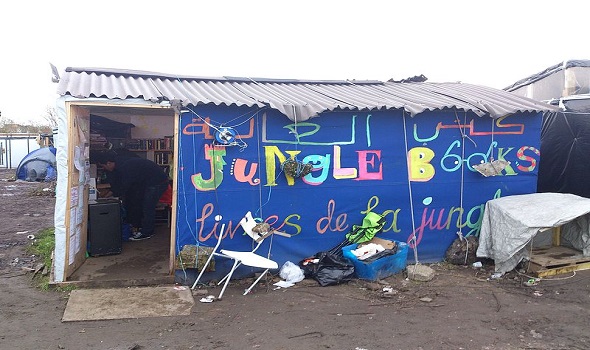Calais - ‘For that brief moment, they had a place of safety’
Calais - ‘For that brief moment, they had a place of safety’

Calais
Art therapist Mary-Rose Brady is still haunted by her visit to the Calais “Jungle” earlier this year; “What I witnessed with my own eyes were men who looked like shells when they arrived, like bodies without souls.”
The camp was burnt down a year ago, but an estimated 7,000 refugees and migrants – including many unaccompanied children – remain in the area, still hoping to get to Britain, still suffering police abuse. Many hide in the woods or in a waste dump on the edge of town.
In July, Human Rights Watch documented abuses in a report titled “Like Living in Hell”.
The French and British governments are focussed on dispersal and deterrence rather than on rights and humanitarianism, but volunteers continue to provide food, legal advice – and art.
“It’s really the best medicine for these men and boys,” Brady says.
Brady, director of the British Association of Art Therapists, visited Calais to work alongside Art Refuge UK as it encouraged migrants to make art: “It was like watching them come back to themselves, through art.”
One windy afternoon a group of teenage boys turned up at the day centre run by a Catholic non-governmental organisation with which Art Refuge works closely. At first, the boys avoided eye contact with each other. “We didn’t say anything,” recalls Brady. “We just set up art supplies in the middle of the room.” As the minutes passed, the boys moved wordlessly to the table, picked up pens and paper, and tentatively began to draw.
“As they made art, their defences dropped,” says Brady. Their posture changed, smiles were exchanged. In the background an old TV buzzed, playing Eritrean pop songs. Then, Brady recalls, “they began singing. It was beautiful. For that hour, for that brief moment, they had a place of safety."
“Having their truth witnessed and believed is at the core of our work,” she says. A while ago a little boy came up to me and said, 'if you tell someone something, they might not believe you. But if you draw it, it’s there on the table.’
Absorbed in his painting, one boy told Brady, “I’m made of the same stuff as you. People should love me.”
Drawings, paintings, sculptures and written testimony also often make an emotional impact on audiences separated from the crisis, like those living in Britain and the US. “When you’re holding a child’s drawing, you’re holding a truth."
“People become polarised over policies and statistics when large numbers cease to contain meaning. But one person’s story can affect opinions more than a million statistics.”
That’s why, explains sculptor and art therapist Naomi Press, we ask the migrants, ‘What do you do?’ ‘What is your trade?’ It allows them to become individuals with an identity apart from a refugee.”
She and Art Refuge UK CEO Bobby Lloyd are familiar faces in Calais. They have been travelling here every week for more than two-and-a-half years, loaded with paints and paper and other art supplies and ready to listen: “The core of what we do is bearing witness to what they’re going through. It’s human-to-human contact through the medium of art,” says Press.
Maps are an integral part of the process. “We do a lot of work with maps,” says Lloyd. “Our space is about community, about socialising around a table. We use a tablecloth that is a map. That brings people together, as people trade stories of their journeys.”
Migrants gather around a table laden with maps, pens and paint and literally illustrate their place in the world: where they are from, where they are now, and the paths they took to get there.
It is this tactile processing of traumatic experiences that lie at the heart of the effectiveness of art therapy, explains Brady. “Trauma is a felt thing. To get these wordless experiences out through art, through the physicality of the art making, is really crucial to recovery.”
+ French police ‘use beatings, tear gas and confiscation’ against Calais refugees – The Guardian:
https://www.theguardian.com/world/2017/oct/29/calais-child-refugees-police-beatings-harassment
+ Refugee Rights Data Project report with October 2017 stats on violence on child refugees:
http://refugeerights.org.uk/wp-content/uploads/2017/11/RRDP_TwelveMonthsOn.pdf
+ ‘Like Living in Hell’, Human Rights Watch:
+ Art Refuge UK Facebook posts:
https://www.facebook.com/artrefugeuk/?hc_ref=ARRe1O9uR6zdsQLnSvWQ4W1pCRw0dxvWddyI5ZaaE-X7DVqeSqq0gWtTj1QOuws5bo8
Safe Passage Facebook posts:
https://www.facebook.com/SafePassage2/
Help Refugees:
https://helprefugees.org


